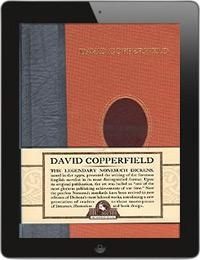 Amazon’s upcoming Kindle MatchBook deal is going to cost me -- big time. But I will be happy to pony up the cash. The program lets buyers of print books from the e-retailer buy a digital
bundle (i.e., a digital version) for anywhere from free to $2.99. The company says that even before the October launch, it has over 10,000 books enrolled, including titles from bestselling authors
like Jodi Picoult, Michael Crichton, JA Jance, Neal Stephenson and Ray Bradbury.
Amazon’s upcoming Kindle MatchBook deal is going to cost me -- big time. But I will be happy to pony up the cash. The program lets buyers of print books from the e-retailer buy a digital
bundle (i.e., a digital version) for anywhere from free to $2.99. The company says that even before the October launch, it has over 10,000 books enrolled, including titles from bestselling authors
like Jodi Picoult, Michael Crichton, JA Jance, Neal Stephenson and Ray Bradbury.
Better still, Amazon will let you get the deeply discounted digital rate on any enrolled book that you
purchased going back to 1995. You will be able to peruse your own purchase history to find the titles you bought in the last 23 years that have eligible digital upgrades.
As far as I am
concerned, this a brilliant stroke on so many levels.
advertisement
advertisement
First, it perfectly dovetails into a cross-platform reading habit I have been practicing for years. As much as I embraced the digital book
several years ago, it actually enhanced my appreciation of the tactile book experience.
I have made my way back through half of Dickens novels in the last year by juggling low-end public
domain e-book versions and the high-end Nonesuch reprints. The downloadable digital editions are of variable quality and accuracy, I found. Formatting is dodgy, and there are many odd codes and
misspellings to be found. Still, it was good enough for reading on my daily hour of climb-machine aerobics. But that made me cherish all the more continuing the read later in these lushly illustrated,
elegantly bound print editions.
In the case of these books, they had marginal subheads added later in life by Dickens and his own best choices of illustration from among the editions
published during his lifetime. The Nonesuch reprints demonstrated the simple superiority of static print layouts over digital.
The Amazon Kindle MatchBook model gives print readers a superior
version of the digital edition that I expect will share pagination with print so the digital reader can locate hand-off points across platforms. And of course, this makes your print library suddenly
searchable.
The idea also acknowledges the evolution of digital media in people’s lives. The original hubris of digital media is that we all would be doing everything someday from a
connected screen. The Web was supposed to “replace” and port so many longstanding media experiences. Mobility has accelerated some of that, but also made the reality much more complex than
the original dream. We move fluidly not only across screens but across media of all kinds, digital and analog. Just as TV didn’t kill radio or movies so much as
help redefine those experiences, so too are we seeing digital’s rich effects on offline experiences.
Next up -- full-on second-screening for books. How about letting the Kindle
app recognize a print book page? Then it could render the digital highlights and notes others have placed online? Likewise, you could add a digital highlight or note to yourself to any line in the
print book? Publishers looking to exploit the cross-media connection could add audio and critical enhancements to the physical book by embedding them in the digital upgrade. Point the app at your book
and get the text augmented in countless ways. This is already being done in select cases, of course, but Amazon is in a position to normalize the practice with “MatchBook” cross-media
bundling like this. The book industry would have a clear incentive to go second-screen.